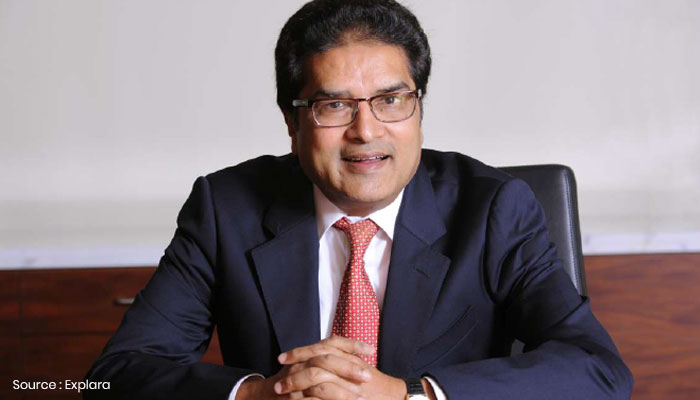Raamdeo Agrawal, born in a middle-class family in Chhattisgarh, is a successful investor and the Chairman of Motilal Oswal Financial Services. A Chartered Accountant, by qualification, he always had a keen interest in studying balance sheets and understanding businesses. Along with his friend Mr Motilal Oswal, He started a broking firm in 1987 and commenced with equity advisory vertical and portfolio management services soon in the mid-1990s. He gradually rose to prominence as one of the most sought-after investors in India, known as India’s Warren Buffet. With a net worth of over INR 13,000 crores, majorly from his fruitful investments, his investment philosophy has accrued a large following among all investors.
Here are the 5 top investment lessons you can learn from the master investor himself:
1. INVEST IN A BUSINESS YOU UNDERSTAND
It is crucial to know the kind of business you are investing in. When you understand the specifics of a particular industry, you can gauge its growth trajectory and potential, thus reducing the risk involved in investing in the business. Mr Warren Buffet had once quoted that risk comes from not knowing what you are doing. A good strategy for this is to identify promising sectors, understand businesses and then make an investing decision.
2. VALUE INVESTING
It is a well-defined principle which says, “Price is what you pay, Value is what you perceive!” is a golden rule of investment. Prices are an effect of psychological reactions of market participants to information and news that vary every day in the market. However, the fundamental underlying of any stock is the business that it operates. It is the value of that business that matters to your portfolio in the long run. As Stock Market is a fight between Greed and Fear, the market generally tends to over-react in a bearish market, i.e. the market corrects more than expected, attributed to psychological factors by market participants during a recession. The principles of Value Investing are most likely to be used at such times. It is wise always to analyze a company’s fundamentals and recent history to gauge whether it is worth investing in. These companies have given exponential returns in years after a recession leaving investors with exponential gains in the long term. These are also known as bargain purchases.
3. BUY RIGHT, SIT TIGHT
Mr Ramdeo Agarwal’s investment style is to invest in the long term appreciating assets. He believes that one should invest the surplus and sell when he is in dire need of funds. Market volatility is one of the biggest problems for any investor. Buying quality business stocks at the right and reasonable price is essential. Further, long term investments have the benefit of compounding of returns as well. The long-term investment thought process allows the investor to withstand the short-term volatility and psychological reactions to stock prices.
4. THREE D’s OF INVESTING
Mr Raamdeo Agarwal believes that success in equity investment can be achieved through the three D’s of investing: Discipline, Diversification and Differentiating between value and prices.
Mr Agrawal believes that discipline, irrespective of whether the market is good or bad, is an essential trait of any successful investor. He has been very disciplined in his investing approach throughout his investment career of over 30 years now. Discipline brings consistency and creates a habit of winning. When you do the same thing over and over again, you become very good at it.
It is important not to put all eggs in a single basket. Diversification is a technique used to reduce risks by allocating investment in different industries, financial instruments, etc. It is a risk management technique to minimize the risks by investing in varying sectors with disproportionate correlation to each other. i.e. safeguarding the downside risk from a specific company. In his words, “Diversification within a portfolio can take care of all the challenges of the marketplace”. While it does not guarantee against loss, diversification is an essential component of achieving long-term financial goals while minimizing risk. Diversification is vital to eliminate company-specific risk, also known as idiosyncratic risks.

Differentiating between value and price also becomes essential to building a valuable and stable portfolio. As explained earlier in the article, it is important to stay unaffected by price variations. The long-term value is what needs to be followed.
Thus, a combination of these three methods becomes crucial for any successful investor.
QGLP INVESTMENT FORMULA
Mr Raamdeo Agarwal has stressed enough on this formula. QGLP (Quality, Growth, Longevity and Price) strategy for investment looks after the four primary fundamentals of long term wealth creation. This strategy expertly examines the following:
- Quality (Q) of business and management: The Quality of a business or company is reflected in its ability to extract significant returns on capital invested while prioritizing the interest of stakeholders. This ability should be deep-rooted and hence sustainable in business.
- Growth (G) of earnings and RoE: Growth is key characteristic investors search for while selecting companies for investing. However, Growth by itself doesn’t mean much. It adds value only when the company’s return on capital exceeds the cost of capital. Thus, Growth is simply an amplifier: good when return exceeds the cost of capital, bad when performance is below the cost of capital, and neutral when profit equals the cost of capital. Higher Growth adds value for high return businesses and discredits value for low return businesses.
- Longevity (L): A useful practice for an investor is to determine how long a company whose returns on capital exceed costs can continue to find fruitful investment opportunities. Longevity can also be seen in understanding the growth potential for 10-15 years. It analyses the relevance of a business in the long term. Longevity, in simple terms, would mean the sustainability of the company to maintain or increase the level of current profits and its ability to withstand the changing market dynamics.
- Price (P): Price of a stock has to be seen in concurrence with the value it offers. Price is what we pay; value is what we get. Therefore, stocks are more attractive when the price is less than the intrinsic value of the stock.
These investment lessons are just a few chapters of the investing world that Mr Raamdeo Agrawal has experienced in his 30 years of investing experience. They provide a clear guide to the investment habits and traits one should hone to find success in the marketplace.

